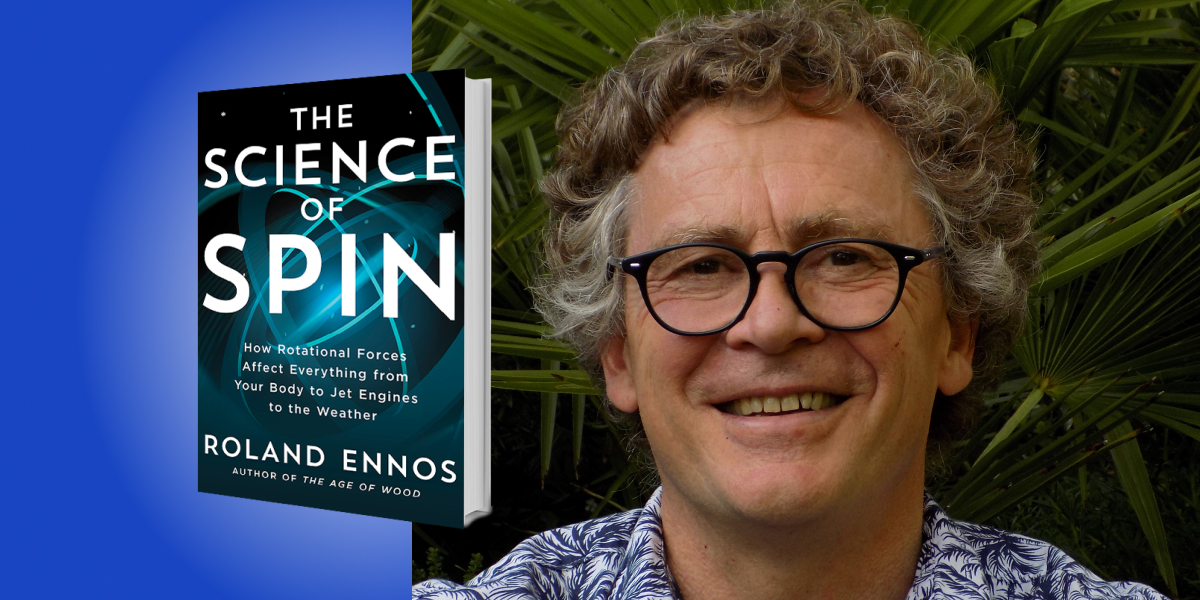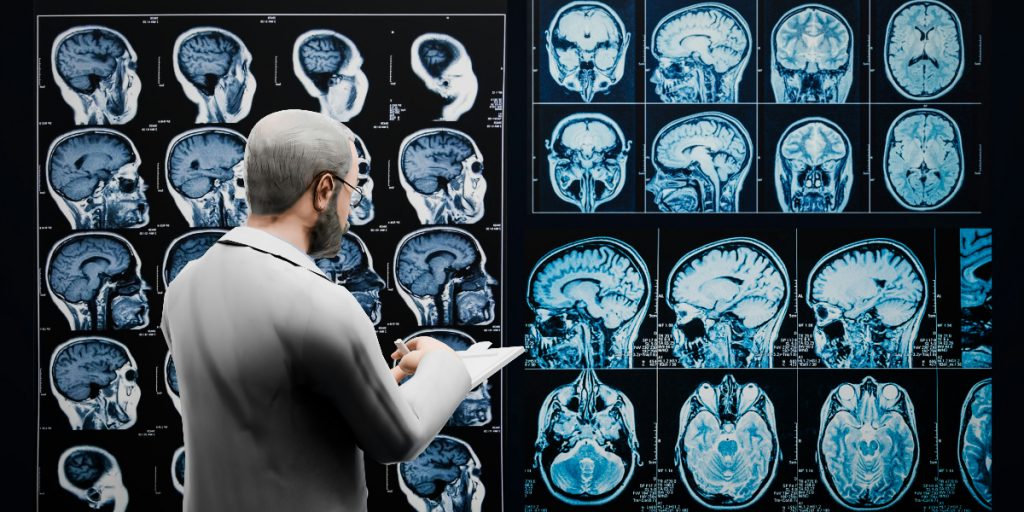Roland Ennos is a visiting professor of biological sciences at the University of Hull. He is the author of successful textbooks on plants, biomechanics, and statistics, and his popular book Trees, published by the Natural History Museum, is now in its second edition. Below, he shares five key insights from his new book, The Science of Spin: How Rotational Forces Affect Everything from Your Body to Jet Engines to the Weather. Listen to the audio version—read by Roland himself—in the Next Big Idea App.

1. Spin shaped the universe.
We all know that it’s the force of gravity that draws matter together into stars and planets. But few people realize that it’s spin that has shaped the universe and ordered it into a series of disc-shaped structures.
Take our solar system, for instance, which was formed when the explosion of a supernova set a cloud of gas and dust spinning in space. Gravity rapidly flattened this cloud, but because of the centrifugal force on the particles, it couldn’t pull them inwards, so they formed a rotating disc of matter, like Saturn’s rings. It was only then that gravity between the particles could pull them together to form the planets and the sun.
This explains why the planets orbit the sun in the same plane and in the same direction. It also explains why they spin in the same direction and why their moons orbit in the same direction. Our galaxy is disc-shaped for the same reason. It was formed from the gas that was created by the cosmic explosion at the start of the universe that we know as the Big Bang. Like a normal explosion, the cosmic microwave background shows that this produced huge eddies in the gas and the galaxies coalesced around them. We are only here because of spin.
2. The spin of the earth makes it habitable.
Life can survive on Earth because it orbits the sun in its Goldilocks zone—not too near and not too far away—so that liquid water can lie on its surface. But if the earth wasn’t rotating, life would be impossible.
Cosmic rays from the sun would destroy life and strip the Earth of its atmosphere, and the sun’s heat would drive devastating hurricanes around the planet. The spin of the Earth solves both problems. It creates Coriolis forces that divert the convection currents of molten metals in the Earth’s core into columns of fluid rotating around a north-south axis. These coils act like giant dynamos to create the earth’s magnetic field, which acts as a shield that deflects the cosmic rays away from us.
“But if the earth wasn’t rotating, life would be impossible.”
The Coriolis forces act on the Earth’s atmosphere as well. They divert winds and prevent them from running across the globe, creating a host of benign climates, and they curve airflows into circular weather systems that release rain onto the land. It’s the spin of the Earth that keeps us alive.
3. Spinning machinery drives the modern world.
In school, we all learn about how reciprocating machines such as steam engines powered the industrial revolution. But today, we rely far more on rotating machinery that barely gets a mention.
Ninety-eight percent of our electricity is generated by fast-spinning turbines which are powered by steam, gas, water, and the wind, and these turbines drive rotating electric generators. Half of this electricity is then used to power rotating electric motors.
Our homes are full of electric-powered rotating devices, from the pumps and fans in our dishwashers and air conditioners to the mowers and trimmers in our gardens. Rotating engines power our electric cars and the airplanes we fly in. Rotating pumps distribute water, oil, and gas around the world. Rotating devices also store our information, from records to computer hard drives. Without rotating machinery, the modern world would grind to a halt.
4. Rotational forces power our movements.
Most biology books suggest that to walk, run about, and hit and throw things, we move our limbs using finely coordinated contractions of our many arm and leg muscles. In fact, we move about in a far more economical way; we power our movements using our core body muscles, which twist, bend and rotate our bodies. In turn, these body movements swing the segments of our arms and legs about like pendulums and slings. Our arm and leg muscles merely enhance these actions and fine-tune our movements.
“We power our movements using our core body muscles, which twist, bend and rotate our bodies.”
In this way, we move about more economically and gracefully than man-made robots. It enables us to transmit unprecedented bursts of power to our tools and weapons. The techniques we all use are harnessed by sportspeople to achieve apparently impossible feats of athleticism. But perhaps the most amazing thing of all is that we all use spin to control our movements without even knowing it.
5. Mathematics is not enough.
Physicists and engineers would have us believe that the only way to comprehend the world is to describe it with mathematical equations. Unfortunately, this obsession with math discourages the many students who don’t think in this way, and it has consistently hindered our understanding of sciences as diverse as cosmology, meteorology, and biomechanics.
To understand how the world around us really works—how the solar system formed, why the climate varies around the world, and how we walk and run, for instance—we also have to use our physical reasoning and imagination. To educate the next generation, therefore, we need to use a far more hands-on approach to science teaching. We need to allow students to play and carry out experiments, watch videos of how things move, and encourage them to keep using their imaginations. All of us need to get our heads into the spin.
To listen to the audio version read by author Roland Ennos, download the Next Big Idea App today:































